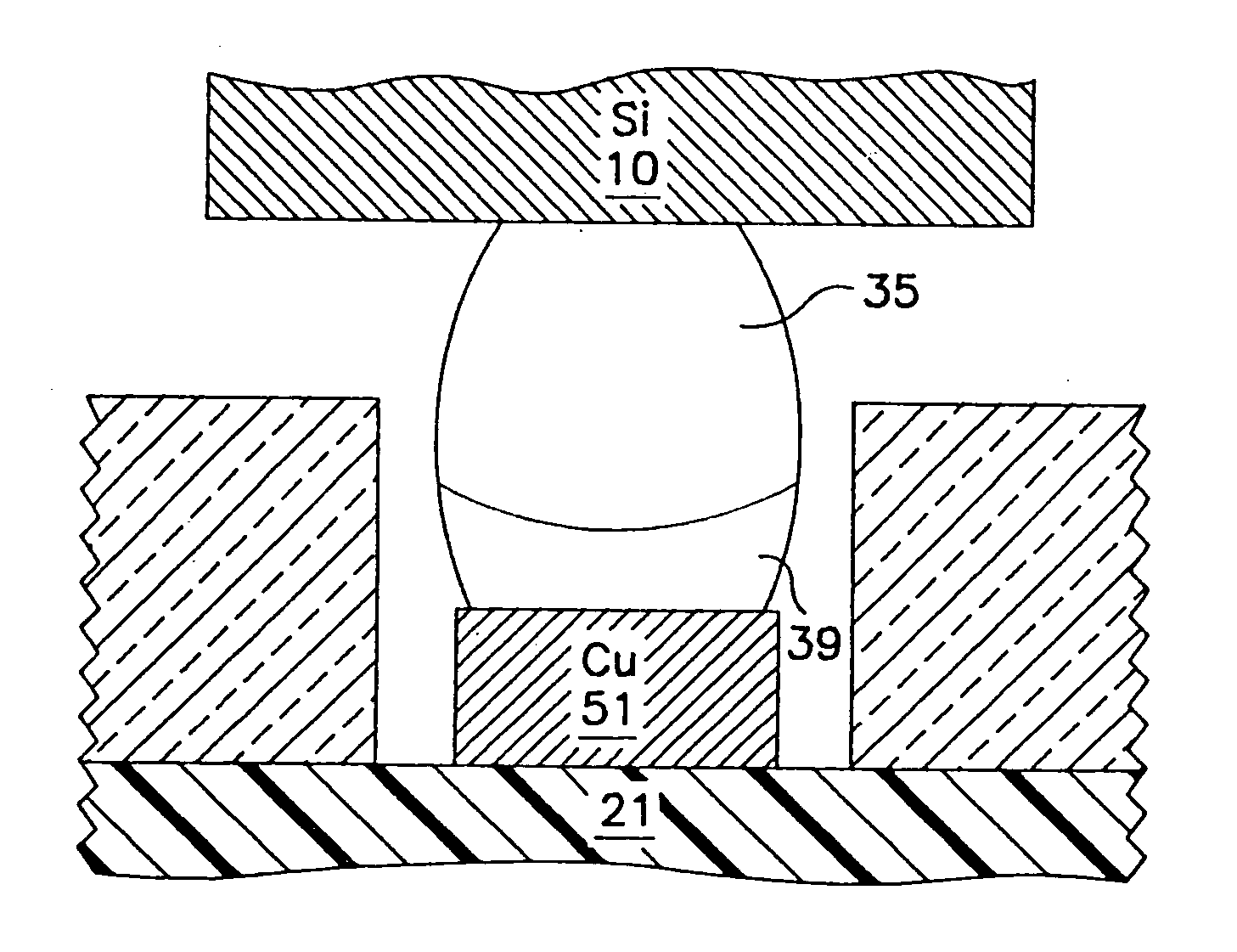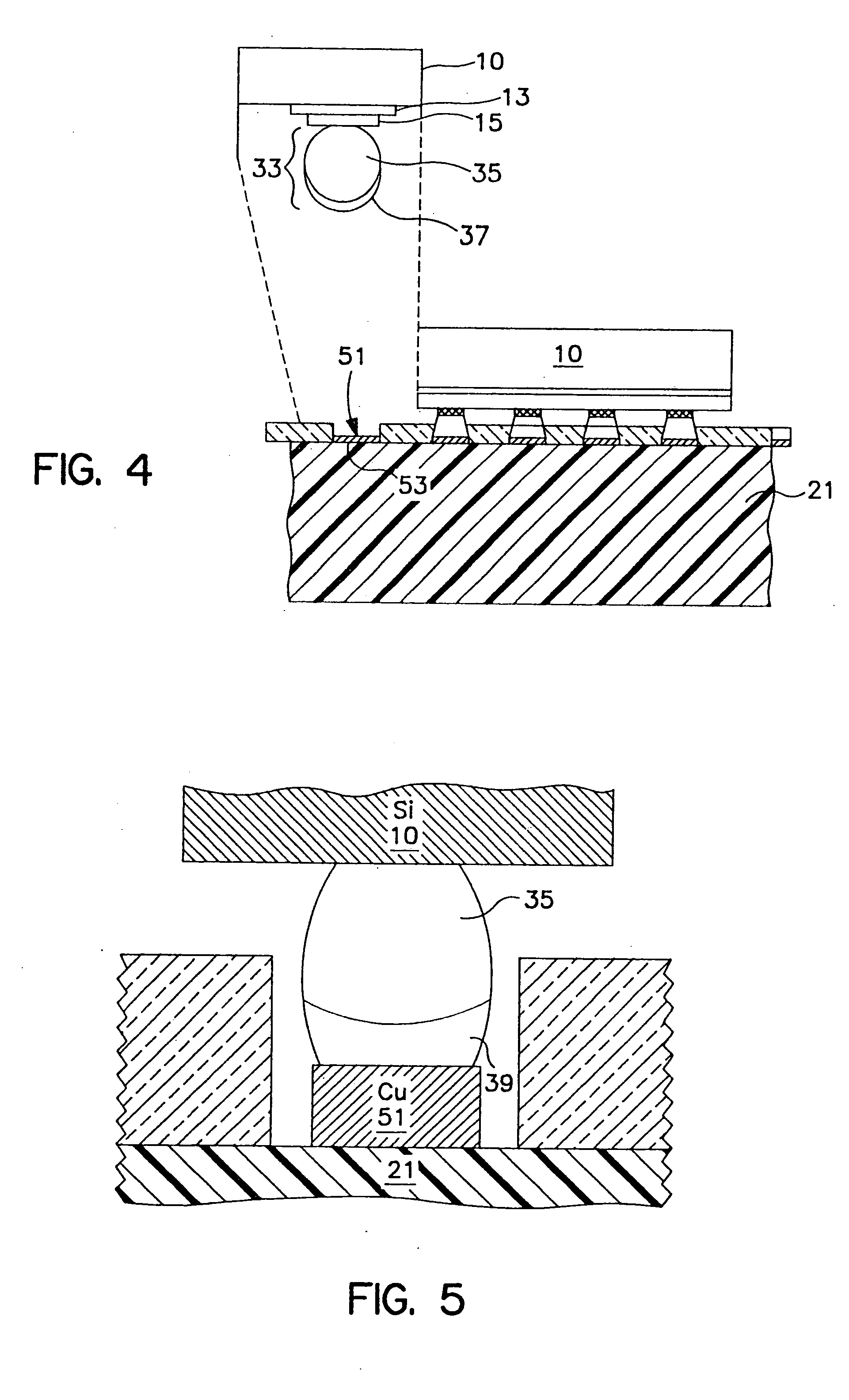Low temperature solder chip attach structure and process to produce a high temperature interconnection
a low temperature solder chip and interconnection technology, applied in the direction of soldering apparatus, sustainable manufacturing/processing, final product manufacturing, etc., can solve the problems of high cost of fabrication, inability to meet the requirements of high-temperature interconnection, so as to increase the reliability of the connection
- Summary
- Abstract
- Description
- Claims
- Application Information
AI Technical Summary
Benefits of technology
Problems solved by technology
Method used
Image
Examples
Embodiment Construction
[0028] The present invention is directed to a process and structure for adhering a material to a supporting substrate. The present invention is used to join semiconductor chips, such as ball grid array (BGA) modules and flip chips, to a substrate, such as a printed circuit board (PCB), a microelectronic circuit card, or any organic or ceramic chip carrier or organic circuit board. A thin cap layer of a low melting point metal or alloy, preferably tin (Sn), is reflowed to form a eutectic alloy and annealed with a high melting point ball, preferably lead-rich. Sn and lead (Pb) will be used as the preferred materials in the following description of the embodiments, but any low melting point and high melting point eutectic system can be used. The annealing causes Sn from the eutectic alloy and any remaining unconsumed Sn from the thin cap layer of Sn to diffuse into the Pb in the ball, or vice versa, and thereby increase the melting temperature of the interconnection. This prevents refl...
PUM
| Property | Measurement | Unit |
|---|---|---|
| time | aaaaa | aaaaa |
| time | aaaaa | aaaaa |
| thickness | aaaaa | aaaaa |
Abstract
Description
Claims
Application Information
 Login to View More
Login to View More - R&D
- Intellectual Property
- Life Sciences
- Materials
- Tech Scout
- Unparalleled Data Quality
- Higher Quality Content
- 60% Fewer Hallucinations
Browse by: Latest US Patents, China's latest patents, Technical Efficacy Thesaurus, Application Domain, Technology Topic, Popular Technical Reports.
© 2025 PatSnap. All rights reserved.Legal|Privacy policy|Modern Slavery Act Transparency Statement|Sitemap|About US| Contact US: help@patsnap.com



